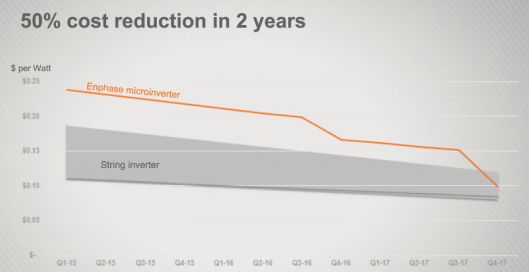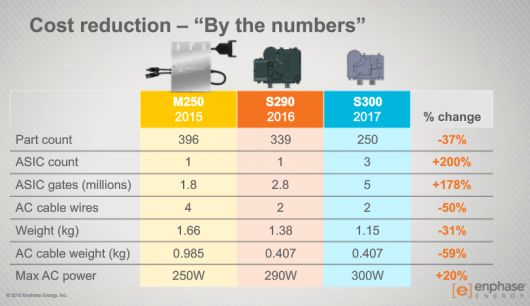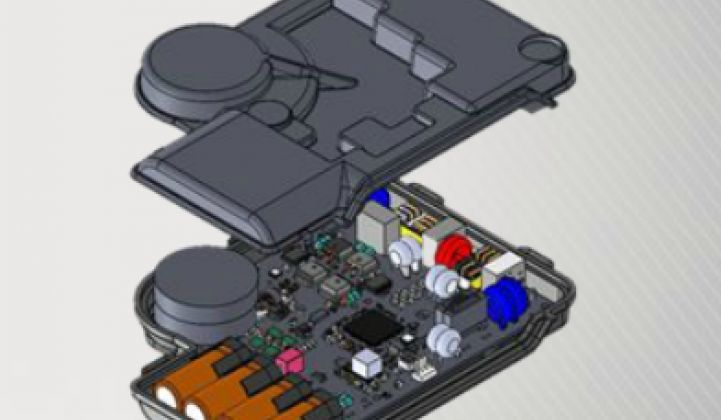There weren't a lot of surprises in the quarterly numbers from microinverter and energy storage company Enphase.
- Total revenue for the second quarter was in line with Street estimates at $79.2 million on sales of 186 megawatts (AC), an increase of 24 percent compared to the first quarter of 2016 -- but down from last year's Q2 ($102.1 million, 195 megawatts-AC)
- GAAP net loss for the second quarter of 2016 was $16.7 million
- The biggest casualty was GAAP gross margin of 17.9 percent versus 32.3 percent during the same quarter last year
- The next-gen microinverter is coming "out [at the] end of this year or early next" and its cost reduction target is still the same from analyst day -- 50 percent by the end of 2017
- The company expects continued cash burn in the second half and cash generation in first half 2017
- "We expect revenue for the third quarter of 2016 to be within a range of $87 million to $93 million," stated CFO Kris Sennesael, with gross margin to be "within a range of 17 percent to 20 percent."
Paul Nahi, Enphase's CEO, claimed that the company is "regaining market share worldwide."
As we reported last month, Enphase entered into a $25 million loan agreement with a lender specializing in "rescue financing" that furnishes capital "to avoid a restructuring or insolvency."
Despite helping to forge an industry for module-level power electronics, Enphase has found itself undercut on price by string inverters and SolarEdge's optimizer architecture.
Battered by continuing quarterly losses as it fights to maintain market share, Enphase is betting it all on the short-term growth of the energy storage market -- and its own ability to develop a next-generation microinverter that's markedly smaller, cheaper and more profitable. It's the biggest test faced by Enphase as a public company.
Enphase is also putting a lot of faith in the growth of the Australian energy storage market. Last month Nahi told GTM's Jeff St. John, "We have preorders for 70,000 of our battery and energy management systems in Australia alone."
According to GTM Research's U.S. PV Leaderboard, module-level power electronics -- including microinverters and DC optimizers -- have held a steady 55 percent market share so far in 2016. MJ Shiao, GTM Research's solar head, notes, "Adoption of NEC 2014 in California and installers getting ahead of proposed NEC 2017 rules around rapid shutdown will decrease the price gap between traditional string inverters and module-level power electronics."
Bold microinverter cost-reduction targets
During an analyst day earlier this year, CEO Nahi said the company would scrub out 50 percent of the microinverter's cost in two years and reach parity with string inverters at 10 cents per watt. Nahi acknowledged that the era when customers were willing to pay a significant premium for the Enphase solution has already passed. He added that the company must also move toward the larger energy market and provide complete energy systems for businesses and homeowners.

Enphase co-founder and CTO Martin Fornage offered some details on how the company will attempt to drive down cost. Enphase's next-generation products will continue to integrate more functions into the application-specific integrated circuit (ASIC) and reduce part count.

The company is moving to a lighter-weight polymeric enclosure that reduces grounding requirements and allows for a greater "freedom of design." He said the material allowed for the "lowest transformation cost" while solving some thermal and balance-of-system issues.

In any case, as we've suggested, Enphase faces a harrowing product-development cycle, cost-reduction plan and production ramp on two new products which have to get done, on time and to spec, in order to maintain the company's market viability in microinverters -- and as a going concern.
Oppenheimer Equity notes, "We believe the next two quarters are critical from a market share and cash management perspective. We believe the company needs to defend both pricing and market share in coming quarters as the energy storage business ramps."



